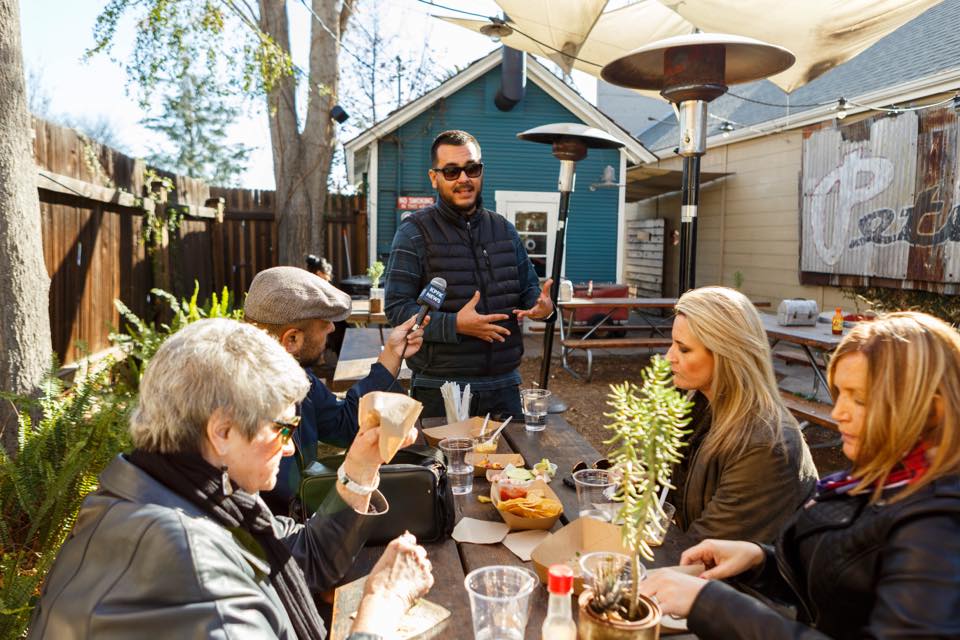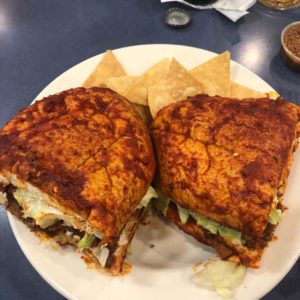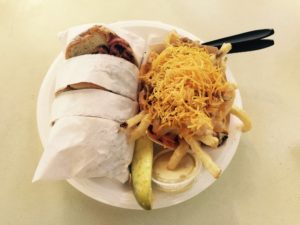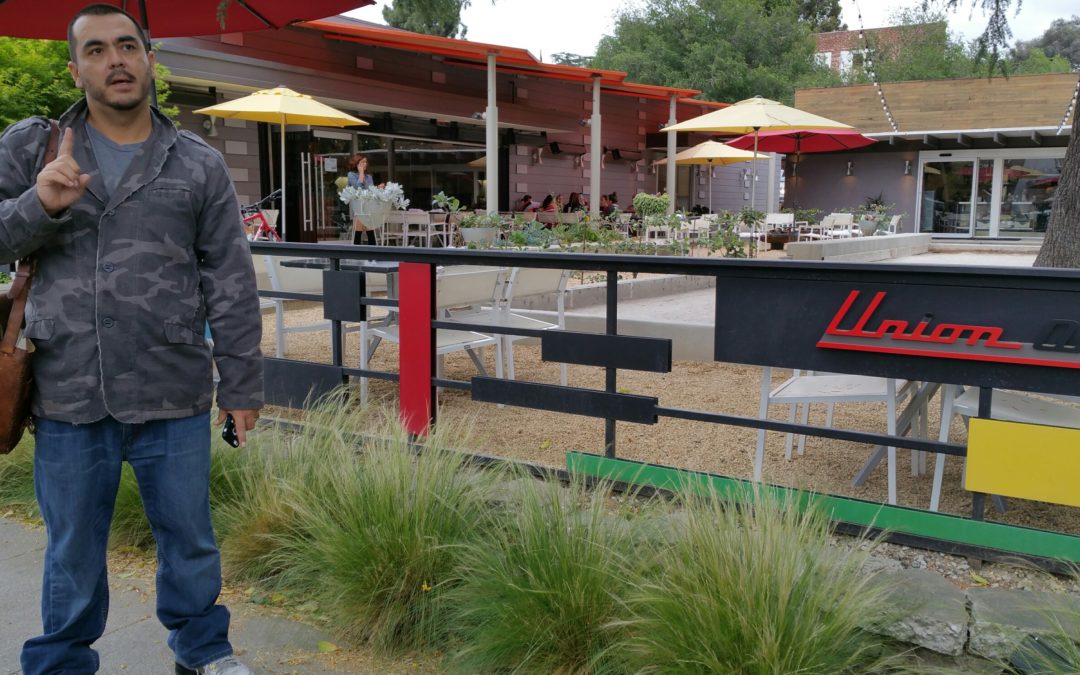This article originally appeared in the Occidental Weekly. Visit funbelly.com to grab your tickets to our upcoming tours.
Author: Daphne Auza
A group of eight followed Occidental alumnus Carlos Aguilar ’98 down Colorado Boulevard during the April 19 soft launch of his food tour company, Fun Belly. The party made six stops on their three-hour tour, including one at Little Beast for a sampling of American comfort food and one at Four Cafe for their organic options. Between dishes, Aguilar entertained his hungry guests with Eagle Rock’s local history and provided stories on the background of each establishment they visited.
With the thousands of restaurants and diverse flavors that make up Los Angeles’ food scene, food tours allow both locals and visitors to sample the lot. Guides take customers on a walking tour of the neighborhood, stopping at restaurants for tastings that add up to a full meal. According to Aguilar, Fun Belly focuses on the dining options available in developing neighborhoods in the San Gabriel Valley and Los Angeles.
“When you take a look at tours that other companies offer, they’re in places like Laguna Beach and Downtown LA,” Aguilar said. “The tours that I offer now are grounded in the history of the San Gabriel Valley and the development of the city of Los Angeles.”
Fun Belly currently offers three-hour public walking tours of eateries in Eagle Rock and the Claremont Village. Public tours in each neighborhood take place once a week, while private tours for special occasions, corporate teams and other groups of six or more may be reserved at any time. Aguilar is also in the process of developing tours for Old Town Pasadena and Highland Park.

Not every tour is the same, according to Aguilar. To plan the tour, he coordinates the time and date for the visit with the restaurant owners and managers and sometimes requests certain dishes or off-menu items. Each tour guarantees at least six tastings.
“Even if the food turns out to be the same [on each tour], the type of information changes because there’s so much rich history, I could never cover it,” Aguilar said.
Before starting Fun Belly, Aguilar wrote and produced documentaries on the Bible, American Idol, WWE and NASCAR, along with food and travel segments for television. Brad Haskell, who attended the launch of the Eagle Rock tour, worked with Aguilar as a camera operator at Associated Television International. He said that the tour was reminiscent of the days when he and Aguilar traveled the country to film and produce television segments.
“[Food] was always a part of our experience, so it was like we were travel hosts or food critics going around and tasting different things from wherever we went,” Haskell said. “The food tour business is cool because it gives people the opportunity to have that experience without traveling too far.”
Aguilar first formally ventured into food culture as an undergraduate when he and education Professor Clarence LaMont Terry—also a student at the time—wrote a column for The Weekly called “tasteBUDS.” Initially the column reviewed meal options on campus, but they eventually convinced local eateries to sponsor their meals with the prospect of free advertising.

“Many, if not most, Oxy students recognized that college meal plans were generally problematic and not designed for students from working class families,” Terry said. “So, while we made it our mission to regularly ‘hack’ the meal plan system, we were also very much interested in what food choices northeast Los Angeles has to offer.”
Aguilar and Terry expanded the scope of their column even further when they applied for a grant from the Durfee Foundation, which allowed them to study interpersonal dynamics around dining in Beijing and Shanghai for six weeks. Aguilar continues to integrate this connection between history, culture and food into his motivation for giving food tours.

“Food is not just something you eat; it’s the culture around the preparation, the serving, consumption and appreciation of the food,” Aguilar said.
With each tour, Aguilar strives to tell a more inclusive history of the neighborhood the group is visiting. After going on a food tour in the San Gabriel Valley offered by the Claremont Historical Society, he said that it neglected the complex history of the area’s development. He plans to avoid doing the same by conducting more localized research, like asking restaurant owners about their personal history within the community.

Aguilar hopes to grow his company by hiring and training tour guides and establishing relationships with more restaurants. In the meantime, he looks forward to receiving feedback from the community at his alma mater.
“[This company] is new and if I were to have 100 people give me feedback on a tour, I’d like as many Oxy folk as possible,” he said.

